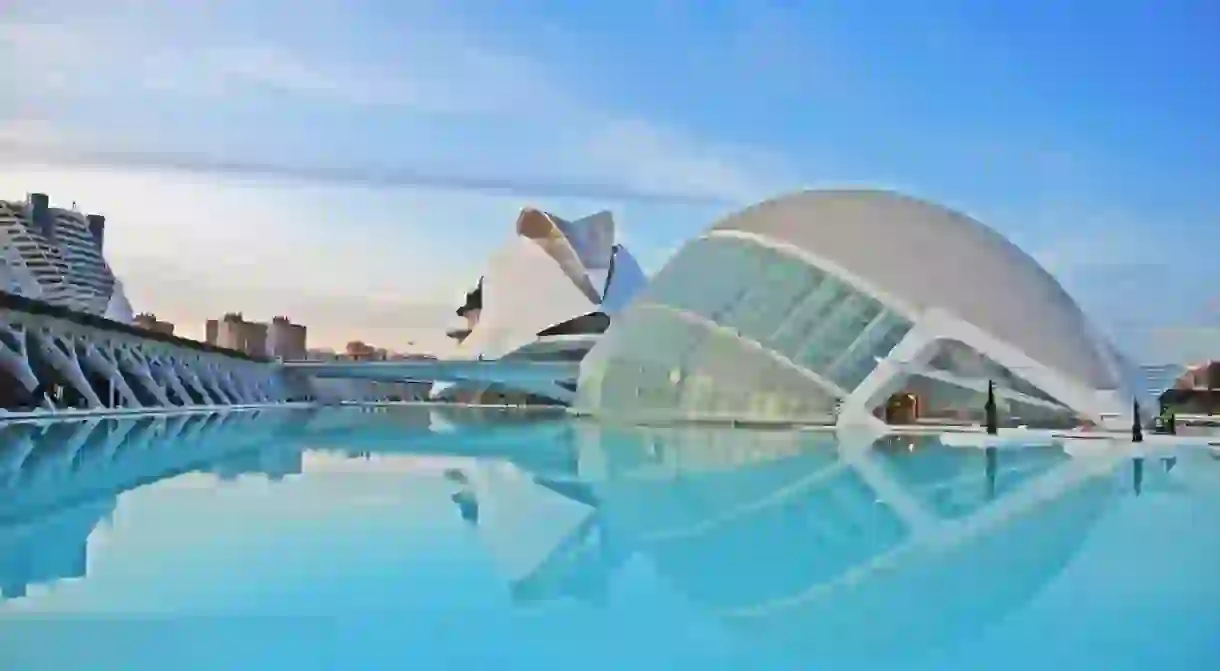The Top 5 Things To Do And See In L'Eixample, Valencia

Spain’s third largest city, Valencia is a great place to visit, with plenty of cultural organizations and activities, a vibrant culinary and nightlife scene, and many stunning historical and modern sights. Known as Santiago Calatrava’s hometown (the world-renowned neo-futuristic architect), the city boasts one of his most popular constructions in the country, the city of arts and sciences. If you’re shopping in L’Eixample neighborhood and you want to see the best the area has to offer, we have listed the top things to see and do in and around L’Eixample.

Ciudad de las Artes y las Ciencias
Aquarium, Cinema, Museum
An impressive architectural masterpiece designed by the internationally famous architect Santiago Calatrava, the City of Arts and Sciences is definitely a must-see if you’re visiting Valencia. There are mainly four big buildings, all worth seeing. The Hemisfèric (an IMAX cinema for large-format projections), the Science Museum (an entertaining destination for both adults and kids), the Oceanogràfic (the largest aquarium in Europe, designed by Félix Candela), and the Palacio de las Artes, built for any kind of creative and entertaining projects or shows.
Museu de Belles Arts de València
Museum, School
Hosting Spain’s second biggest art collection, this bright and spacious museum of fine arts has some of the most impressive artworks in the country, including the great Roman mosaic of the Nine Muses and works from famous Spanish artists such as El Greco, Goya, Ribalta, Murillo and Velázquez. Come and get to know some of the works and artists from the Valencian impressionist school.
Palau de la Música de València
Building, Stadium

With its stunning windows looking over the Turia’s gardens and its glass domes, the Palau de la Música (Music Palace) is one of the greatest auditoriums in Spain and one of the most emblematic modern buildings in the city. Designed by José María de Paredes, he made sure that the building and gardens complemented each other. The building is well lit and there are special projections during the day to welcome visitors.
Plaza de Toros
Building

Built between 1850 and 1860 by Sebastian Monleon, this bullfighting arena whose structure consists of a polygon of 48 sides is where the typical bullfighting events, known as corridas, take place. Even if you’re against the whole thing the arena is worth seeing, since these buildings are a distinctive traditional element of most Spanish cities. In case you’re interested in bullfighting there is the Taurino Museum right next to it, where you’ll be able to learn everything about la corrida.
Mercado de Colón
Market

A gorgeous example of Spanish modernist architecture, this market building is now full of cafés and bars, and it still hosts a gourmet food market downstairs. The whole structure is grand and imposing, providing the perfect place to stop for a coffee or a drink, or even for some breakfast or lunch. Spanish markets were and still are an important and popular site in the Spanish city lifestyle. By Laura Pioli













